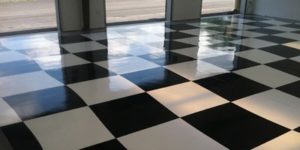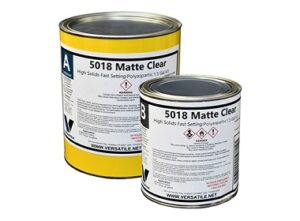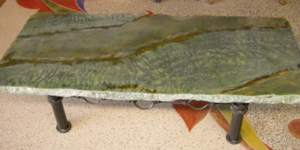
The label “paint on steroids” has been attached to polyaspartic coatings due to the technology’s claims of high-build, fast-cure concrete floor coatings that promise gloss, low-VOC content, film toughness and long-term durability.
Initially used in heavy-duty, industrial and transportation settings such as bridges, water/wastewater plants and other demanding environments, polyaspartic coatings are staking a claim in the commercial and architectural marketplace as well.
There shouldn’t be any mystery as to why: they have a strong performance profile and aesthetically they make colors “pop” on stained concrete floors.
Another big selling point for the technology is rapid turnaround, as a result of rapid cure and high film build — one coat delivers the performance equivalent to two coats of conventional polyurethane coatings, marketers say.
Catalyzed by wish lists from the coatings-user community, recent advances in polyaspartic technology have produced lower-VOC, lower-odor materials also designed to provide an optimal balance of adequate working time with quick-end cure.
Steven Reinstadtler, market manager of construction coatings for Covestro LLC, says these advances were the objective of polyaspartic resin R&D aimed at reducing viscosity to promote higher solids content with greatly reduced solvent and plasticizer levels. These outcomes resulted in ultra-low VOC content and solids content at 95 percent and higher. An extended pot-life without reducing cure time was also achieved. Plus, research produced a product that can be blended with existing polyaspartic resins to tailor cure speeds to fit specific project situations.
This recent polyaspartic resin development program also resulted in enhanced cured-film flexibility for improved impact resistance, Reinstadtler says.
Covestro, formerly Bayer MaterialScience, is a major developer and marketer of polyaspartic coatings materials and technology. Targeted uses for the new polyaspartic coatings are topcoats for industrial flooring, clear topcoats for decorative/stamped concrete and resinous binder systems for aggregate flooring.
Polyaspartic coatings, first introduced in the 1990s, are based on the reaction of an aliphatic polyisocyanate and a polyaspartic ester, which is an aliphatic diamine.
The name polyaspartics has been used to differentiate these polymers from polyureas and polyurethanes, Reinstadtler says. Although they are classified as a pure polyurea, polyaspartic coatings are very different in both application and performance properties from conventional polyureas, in that they allow the formulator to control the rate of reaction and cure, and pot life, of the two-component mixture. Pot life can range from 5 minutes to 2 hours.















